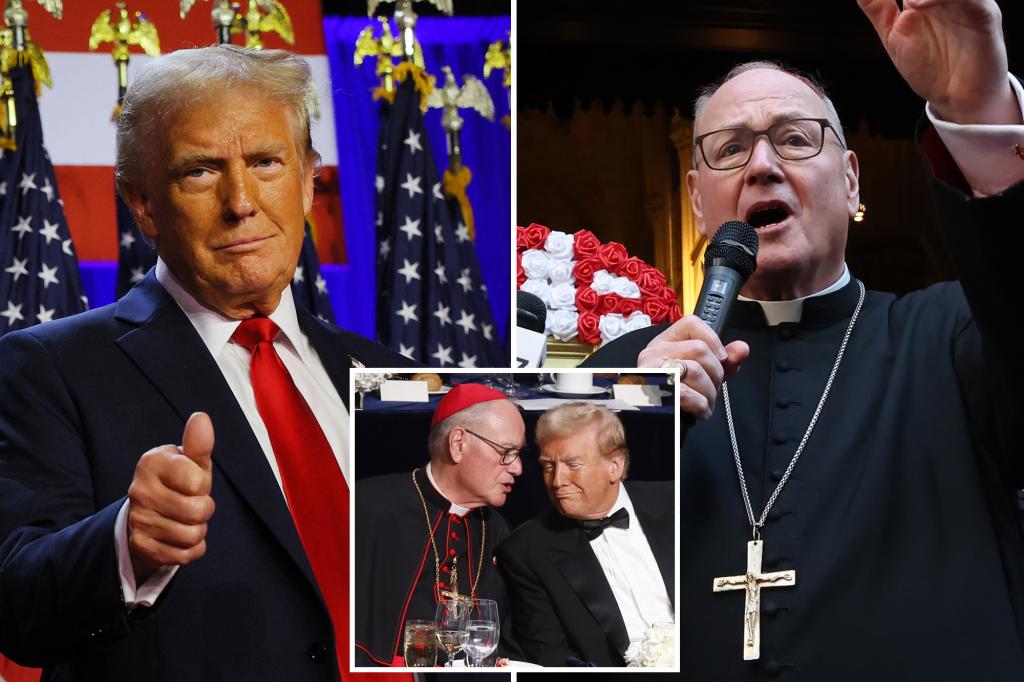Cardinal Timothy Dolan, the Archbishop of New York, offers a message of hope and light this Christmas, a message that resonates deeply with a world grappling with challenges and seeking solace. In an interview with Maria Bartiromo, he observed a renewed interest in faith and spirituality, evidenced by increasing Bible sales and a greater openness to religious principles. He suggests that this resurgence of faith stems from a recognition of something larger than oneself, a force that provides guidance and purpose in a world often characterized by uncertainty and darkness. This resonates with the Christmas message of hope emerging from darkness, a theme particularly relevant during a season often marked by both festive joy and underlying anxieties.
Cardinal Dolan sees this spiritual reawakening reflected in the lives of influential figures like President Trump, former President Reagan, and Pope John Paul II. He recounts President Trump’s expressed belief in a higher power watching over him, particularly reinforced by assassination attempts. Dolan links this sentiment to a broader trend, observing a growing acknowledgment of a divine presence influencing world events. He highlights the shared experiences of Reagan and Pope John Paul II, both surviving assassination attempts and subsequently attributing their survival to divine intervention with a specific purpose in mind. Their leadership, he contends, fundamentally reshaped the world for the better, illustrating the potential for positive change guided by faith.
The theme of faith’s enduring power continues with Dolan’s mention of Jimmy Lai, the imprisoned Hong Kong freedom fighter. Lai’s drawing of Christ on the cross, displayed in St. Patrick’s Cathedral, serves as a poignant symbol of resilience and hope amidst oppression. It underscores the power of faith to sustain individuals even in the face of adversity and to inspire them to fight for freedom and justice. This image, juxtaposed with the upcoming Christmas and Hanukkah celebrations, highlights the universality of the message of hope and the triumph of light over darkness. It serves as a reminder that even in the darkest of times, the light of faith can offer solace and inspire action.
Cardinal Dolan’s message of “the triumph of light” encapsulates the essence of the Christmas story. The birth of Jesus, a symbol of hope and redemption, is celebrated during the darkest time of the year, signifying the arrival of light into a world in need of salvation. This message resonates across cultures and faiths, offering a universal message of hope and renewal. Dolan emphasizes the importance of looking beyond oneself, of recognizing a larger purpose and finding strength and guidance in faith. This resonates with the Christmas spirit of giving and compassion, encouraging individuals to find meaning and purpose beyond their own immediate concerns.
The increasing interest in faith, observed by Cardinal Dolan, suggests a yearning for deeper meaning and connection in a world often characterized by superficiality and division. The search for something beyond the material and the mundane points to a desire for spiritual grounding and a sense of belonging. This renewed focus on spirituality can be seen as a response to the challenges of the modern world, offering solace and direction in times of uncertainty. It reflects a growing awareness of the limitations of purely materialistic pursuits and a desire to connect with something larger than oneself.
As Christmas approaches, Cardinal Dolan’s message serves as a timely reminder of the enduring power of faith, hope, and the triumph of light over darkness. The stories of individuals like President Trump, Reagan, Pope John Paul II, and Jimmy Lai exemplify the strength and resilience that faith can provide, particularly in the face of adversity. The renewed interest in spirituality, evidenced by rising Bible sales and other indicators, suggests a growing hunger for deeper meaning and a desire to connect with something greater than oneself. This search for purpose and connection, particularly prevalent during the holiday season, resonates with the core message of Christmas: the birth of hope and the promise of a brighter future.










